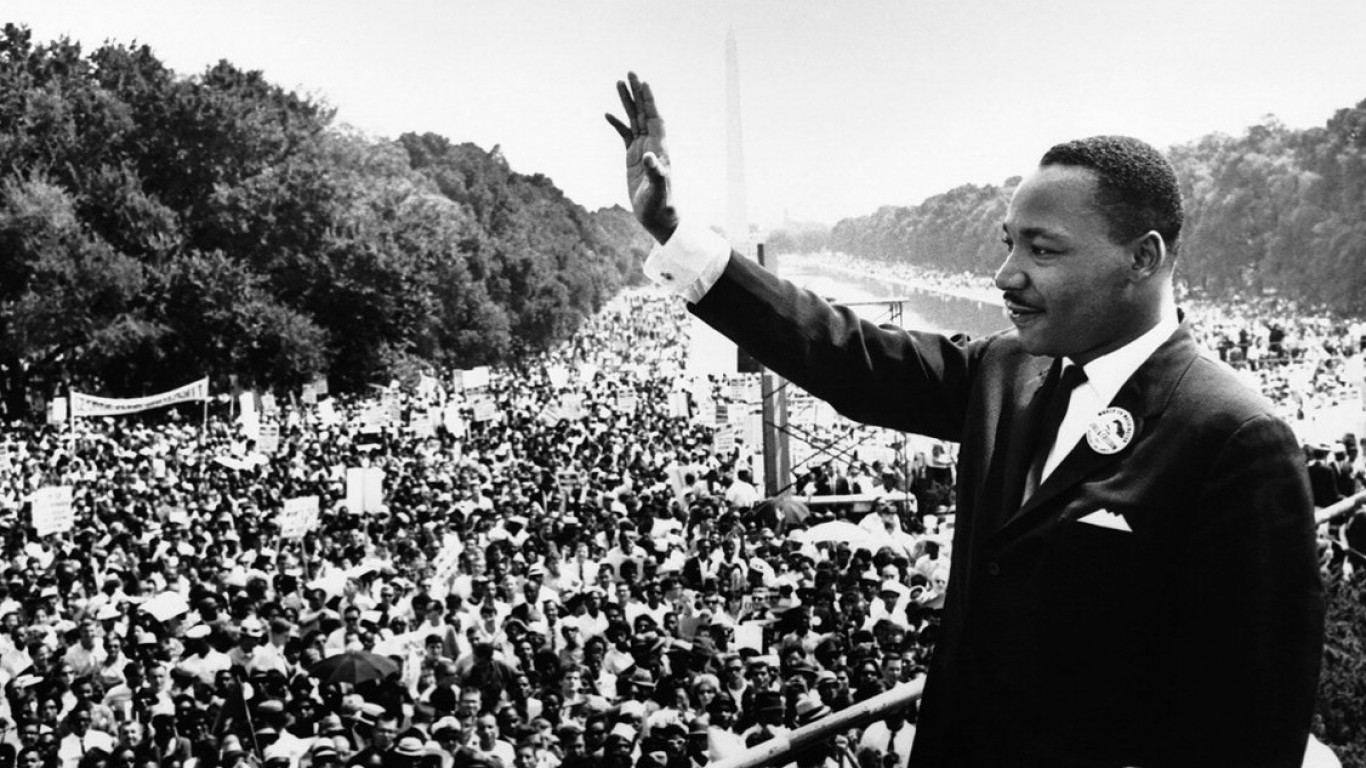
The Rev. Martin Luther King Jr., whose birthday we celebrate this Monday, Jan. 16, is one of the most famous, influential, and respected American leaders of the 20th century. King is known for his tireless and ultimately largely successful campaigns against racial and economic injustice, inspired by the principles of civil disobedience advocated by Mahatma Gandhi. (Read about the origins of every American federal holiday.)
King was born in Atlanta in 1929, the son of early civil rights activist Martin Luther King Sr., pastor of the city’s Ebenezer Baptist Church. After his studies at Crozer Theological Seminary in Pennsylvania and Boston University, the younger King was named pastor of the Dexter Avenue Baptist Church in Montgomery, Alabama. Soon after, in 1955, he led the historic Montgomery bus boycott, sparked by the refusal of a Black woman, Rosa Parks, to give up her bus seat to a white man.
That was the beginning of King’s long public fight against Jim Crow laws, institutionalized racism, economic inequality, and other evils. From 1955 until he was cut down by an assassin’s bullet in 1968, King helped organize and lead such crucial civil rights efforts as the Youth March for Integrated Schools, the Birmingham campaign, the March on Washington for Jobs and Freedom, the Selma to Montgomery marches, and the Chicago Open Housing Movement. (Here’s more about Dr. King and the 49 other most important civil rights leaders of the 20th century.)
In time, King’s fame grew as an activist and moral leader – and as one of the most commanding orators of his time. He became big news and was the subject of countless articles (not all of them favorable), as well as frequent photographic coverage, which gives us a close-up look at this great American, bringing him alive for us 54 years after his death.
Click here to see famous photos from Martin Luther King Jr’s life
To assemble a collection of 26 photographs of the life of Rev. Martin Luther King Jr, 24/7 Tempo reviewed historical archives from Getty Images, Picryl, Wikimedia, and the Library of Congress. The scope of images ranges from those depicting him giving iconic speeches to those chronicling his everyday life with his family.
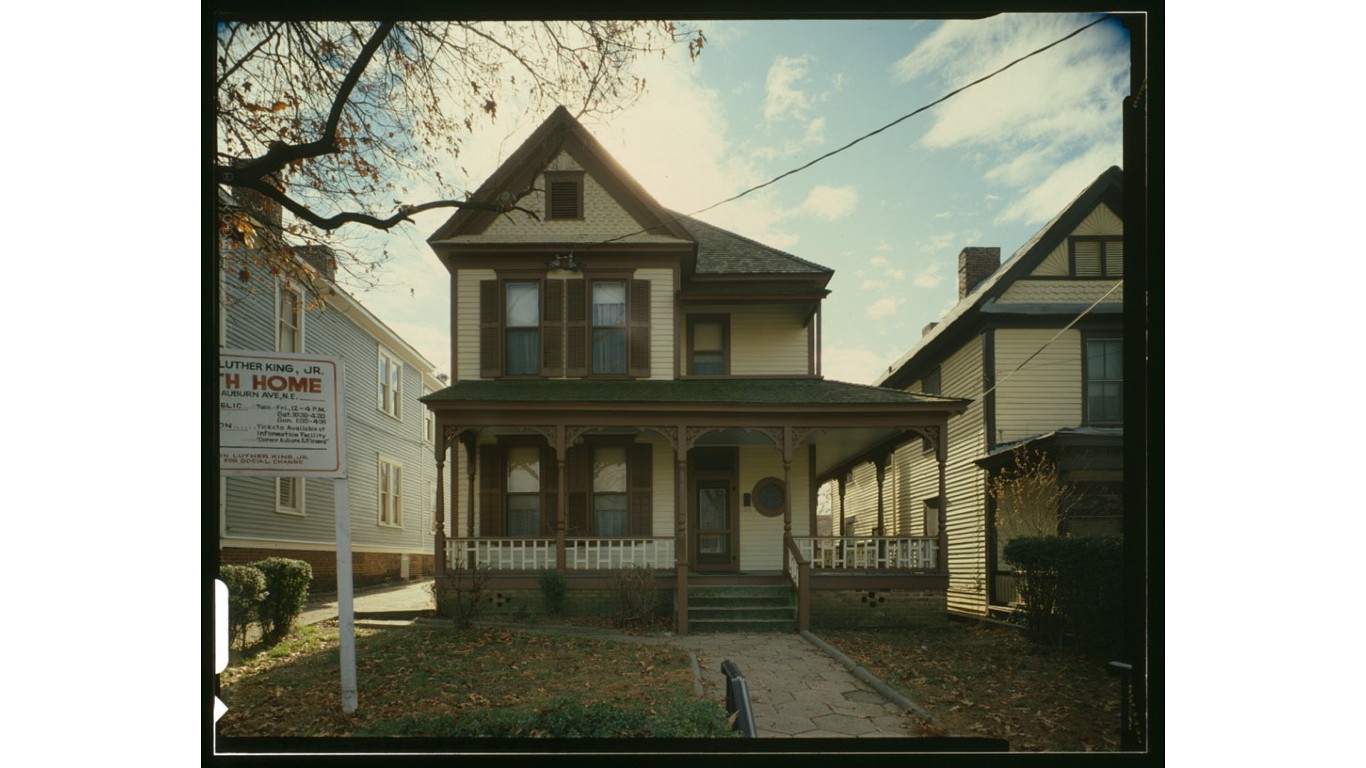
Atlanta, Georgia
The childhood home of Martin Luther King Jr. in Atlanta. The famed civil rights leader was born Michael King Jr. on Jan. 15, 1929. His father, Rev. Martin Luther King Sr., was himself born Michael King Sr., but in 1934 changed his name in honor of the original Martin Luther (1483-1546), considered the founder of Protestantism. In 1957, King Sr. altered his son’s birth certificate to give him the same name.
[in-text-ad]
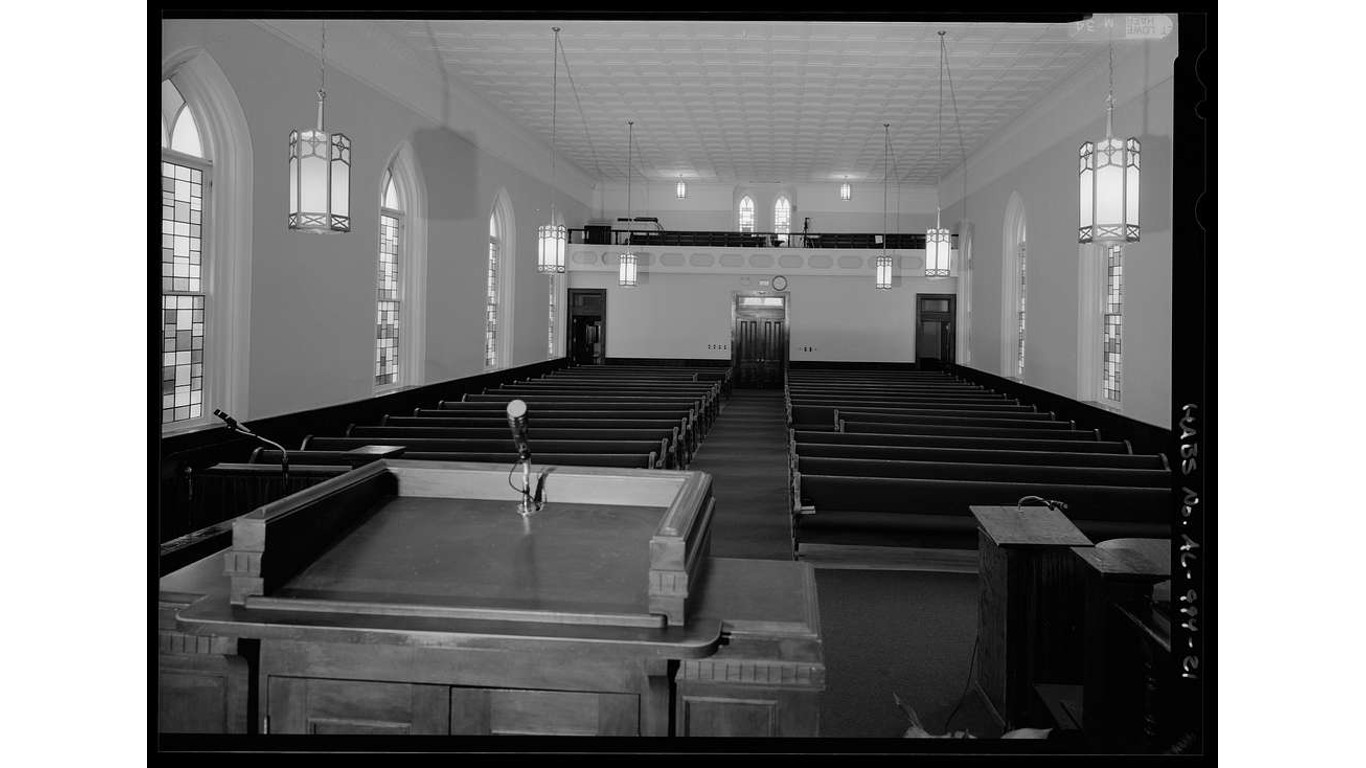
1954: The Dexter Avenue Baptist Church in Montgomery, Alabama
King first started gaining a reputation for his oratorical skills when he became pastor of the Dexter Avenue Baptist Church in Montgomery in 1954. The church was the springboard for his leadership of the Montgomery bus boycott, spurred by the arrest of Rosa Parks for refusing to give up her seat on a local bus to a white man. (The institution was renamed the Dexter Avenue King Memorial Baptist Church in honor of its late pastor in 1978.)

1956: Alabama Judicial Building in Montgomery, Alabama
King and his wife, Coretta Scott King, whom he’d married in 1953, seen in front of the Alabama Judicial Building in Montgomery.
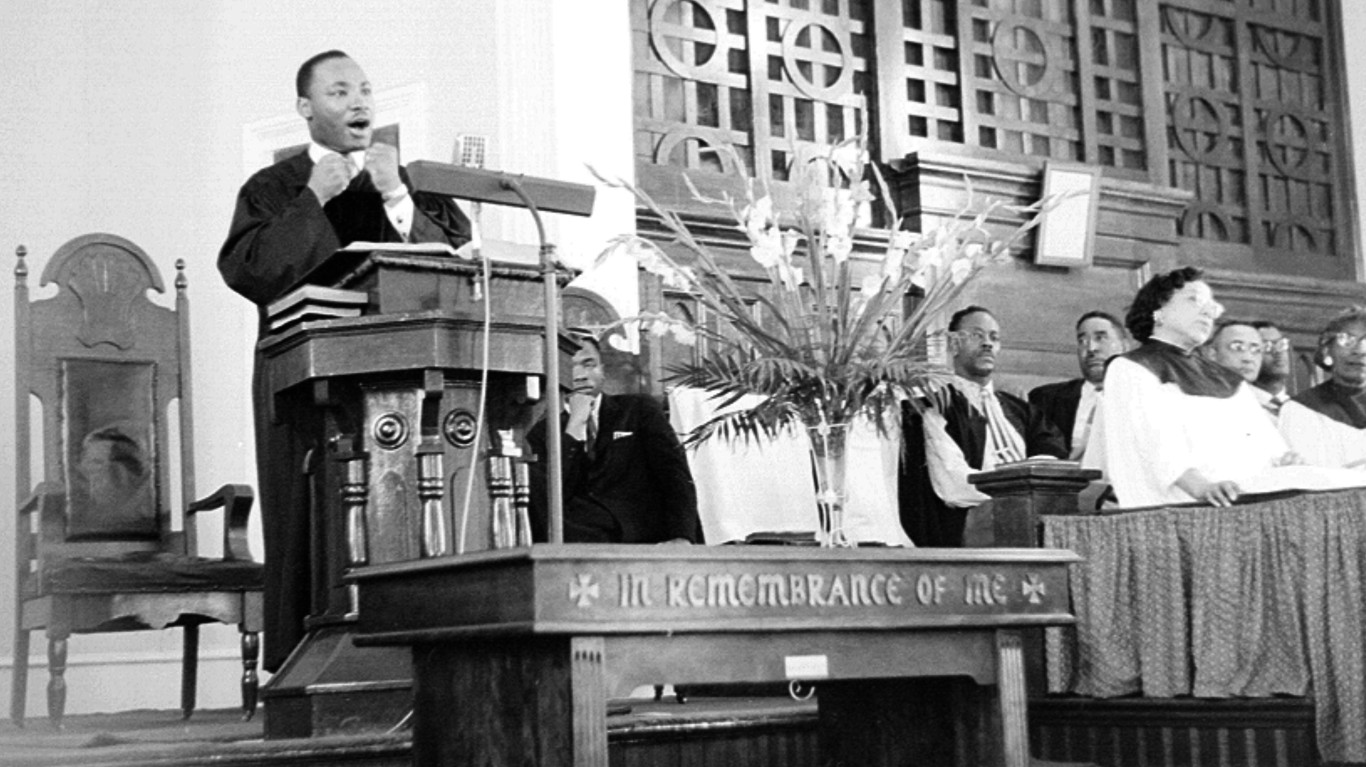
May 13, 1956: Montgomery, Alabama.
King preaching to his congregation at the Dexter Avenue Baptist Church. He served at the church from 1954 through 1960 – his only solo stint as pastor, though he was later co-pastor with his father at Ebenezer Baptist Church in Atlanta.
[in-text-ad-2]
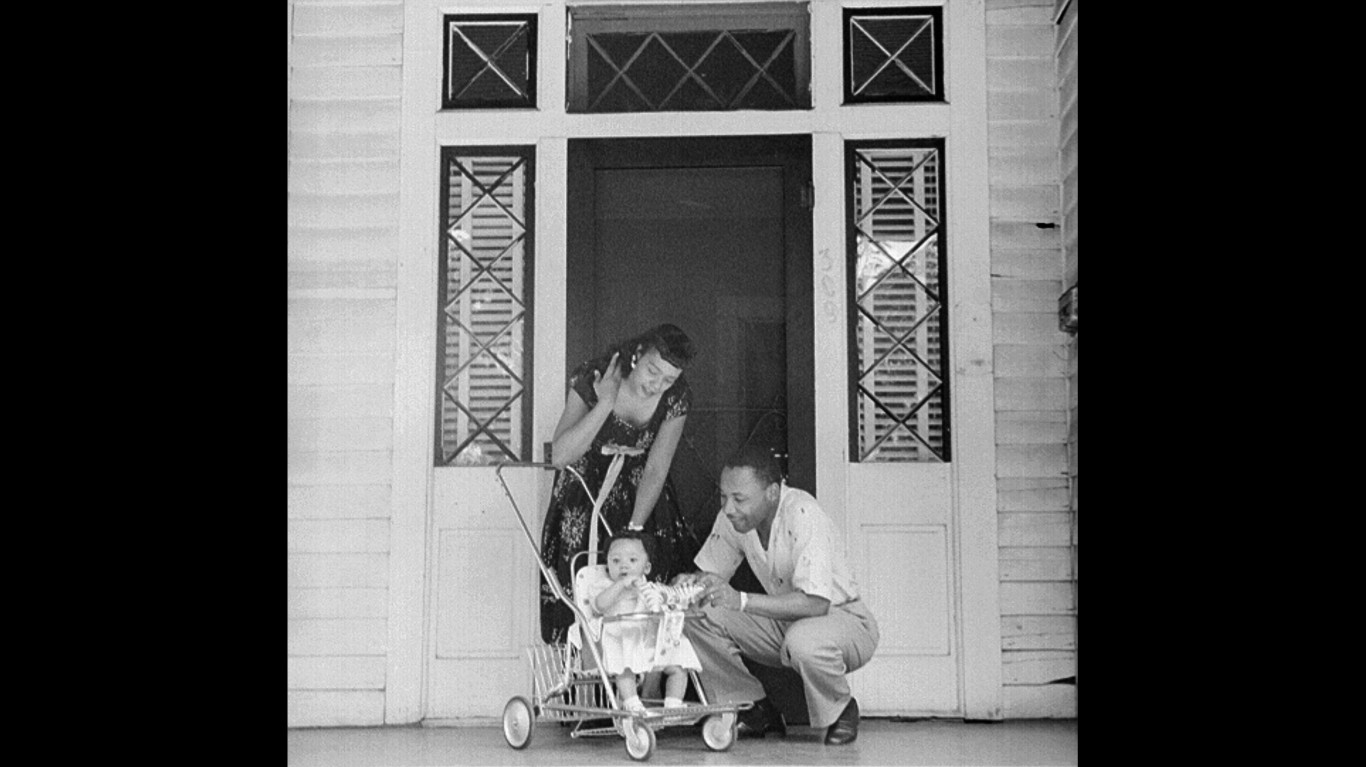
May , 1956: At home in Montgomery, Alabama
King at home in Montgomery with his wife, Coretta, and the first of their four children, Yolanda.
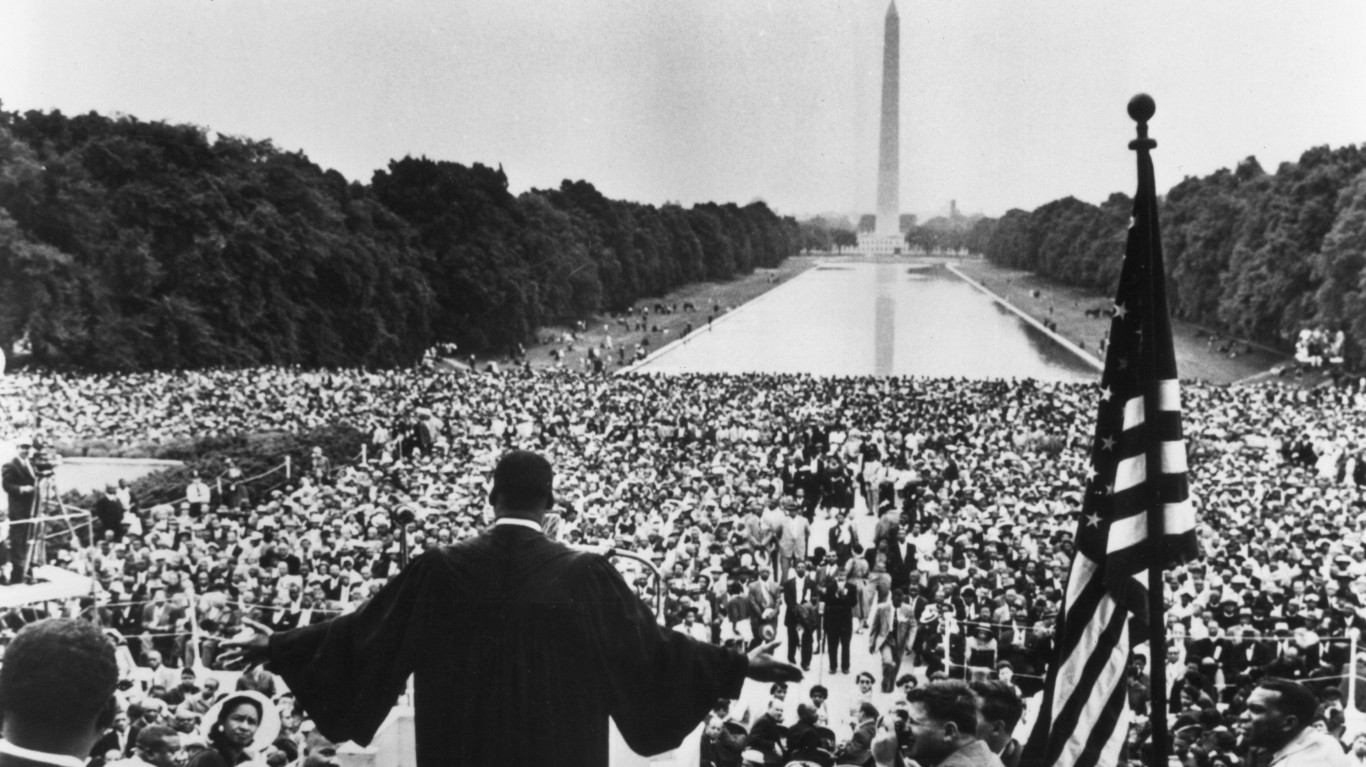
1957: Prayer Pilgrimage for Freedom in Washington, D.C
King addressing a crowd of more than 25,000 at the Lincoln Memorial at an early major civil rights demonstration called Prayer Pilgrimage for Freedom, on May 17.
[in-text-ad]

1958: Arrested for loitering in Montgomery, Alabama
While outside the Montgomery Recorder’s Court, attempting to gain entry to witness the arraignment of a Black man accused of assaulting civil rights leader Ralph Abernathy, King is arrested for “loitering.”

1961: In First Baptist Church, Montgomery, Alabama
King (center) with other civil rights activists, strategizing in an office at Montgomery’s First Baptist Church.
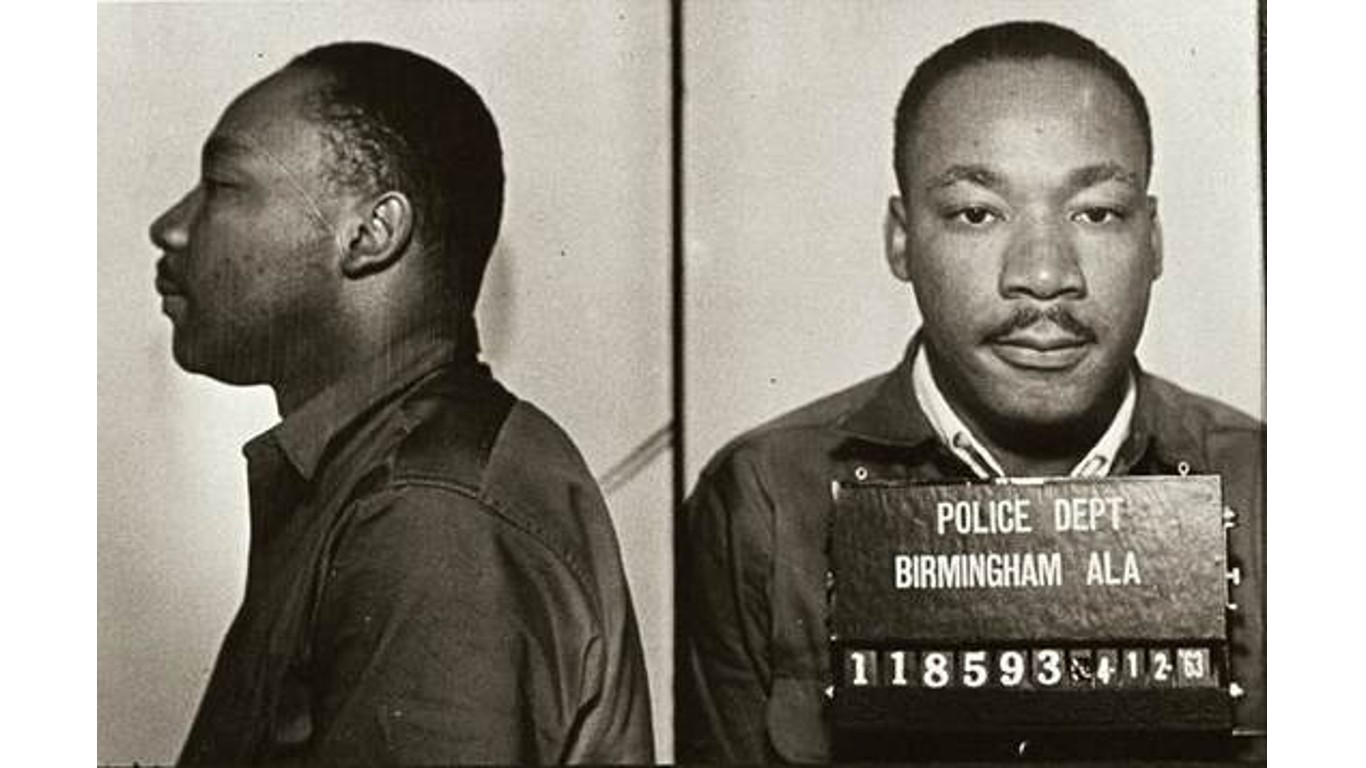
April 12, 1963: Arrested in Birmingham, Alabama
King’s mugshot following his arrest in Birmingham during a campaign against segregation and economic inequality spearheaded by the Southern Christian Leadership Conference, of which King was president.
[in-text-ad-2]
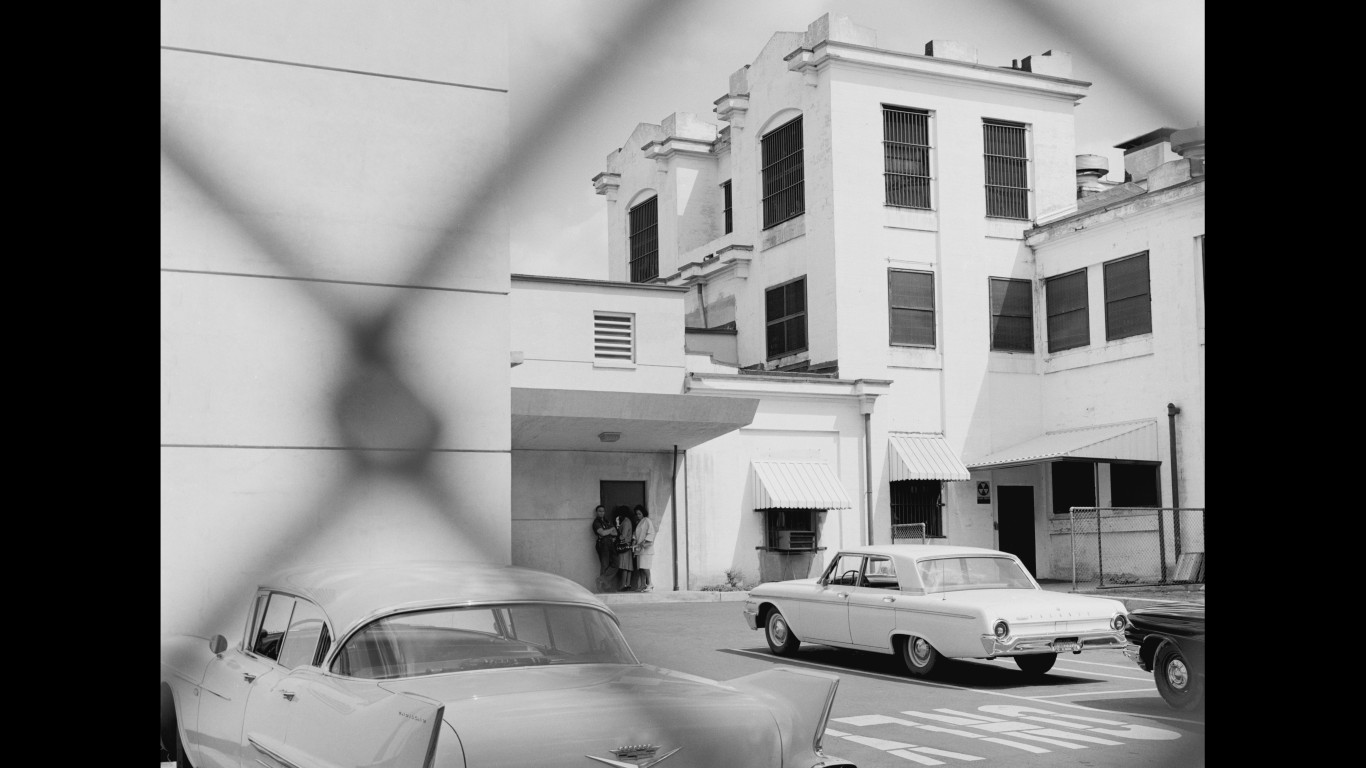
April, 1963: Birmingham City Jail in Birmingham, Alabama
The jail in which King was held following his arrest. While there, he penned his famous Letter from Birmingham Jail, an impassioned call for civil disobedience in the service of morally just causes, which has come to be considered one of the most influential documents ever written by a political prisoner.
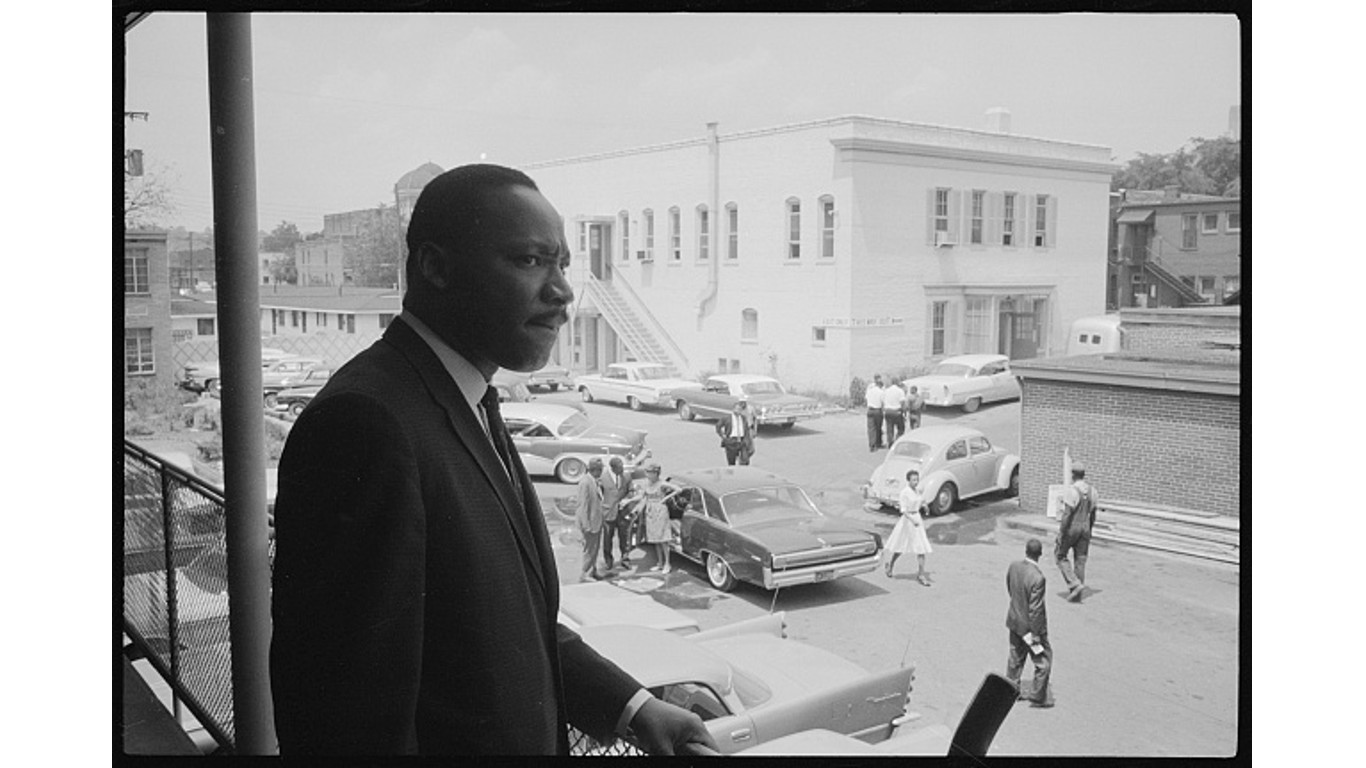
May 16, 1963: At the A. G. Gaston Motel in Birmingham, Alabama
King looks out from a balcony at Birmingham’s A. G. Gaston Motel, a key meeting place for civil rights leaders during the Birmingham campaign, and today preserved by the National Park Service as the A.G. Gaston Motel and Birmingham Civil Rights National Monument.
[in-text-ad]
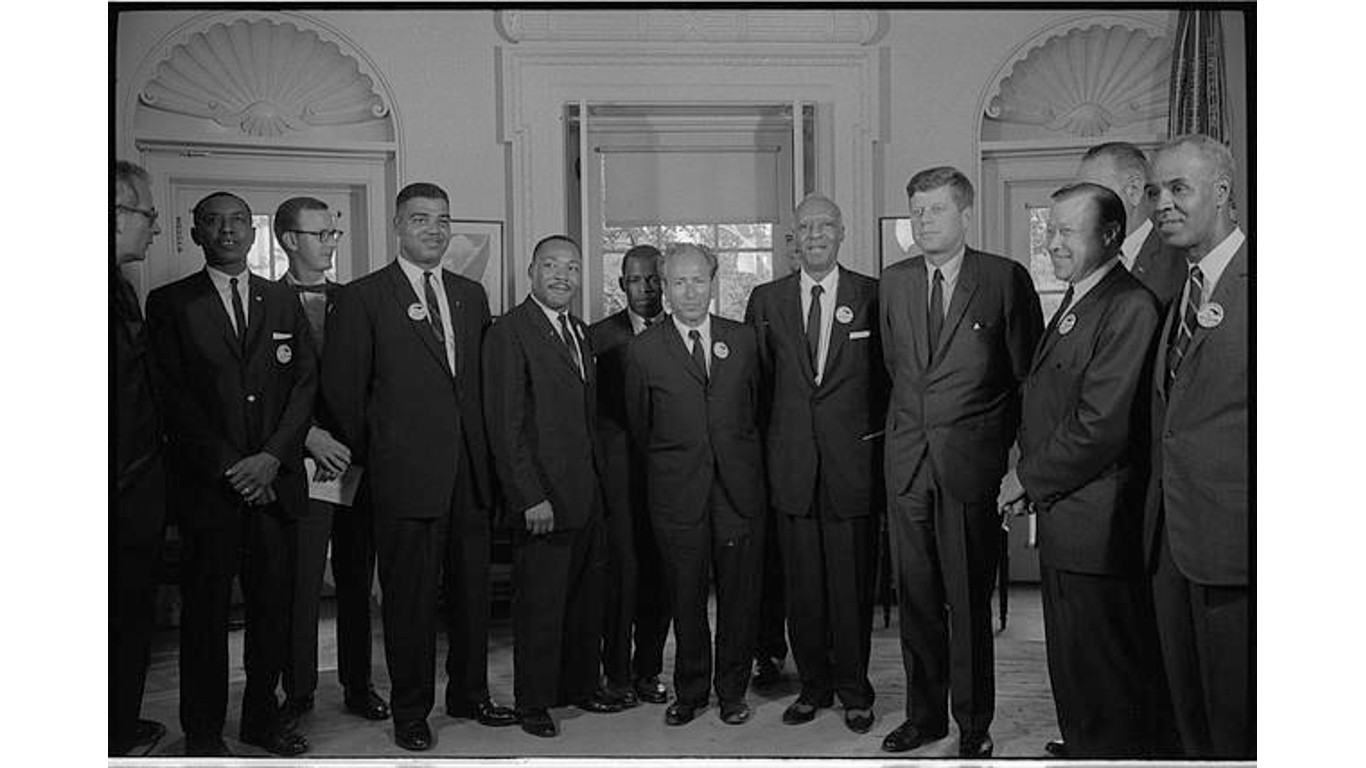
Aug. 28, 1963: Meeting with President John F. Kennedy at the White House
King (fifth from left) meets with President Kennedy, other civil rights leaders (including Roy Wilkins of the NAACP and Floyd McKissick of CORE).

Aug. 28, 1963: Civil Rights March on Washington, D.C.
King with Mathew Ahmann, executive director of the National Catholic Conference for Interracial Justice, at the March on Washington for Jobs and Freedom (widely known simply as the March on Washington). It was at this demonstration, which drew more than a quarter of a million people to the National Mall, that King delivered his immortal “I Have a Dream” speech – considered one of the greatest speeches in American history.
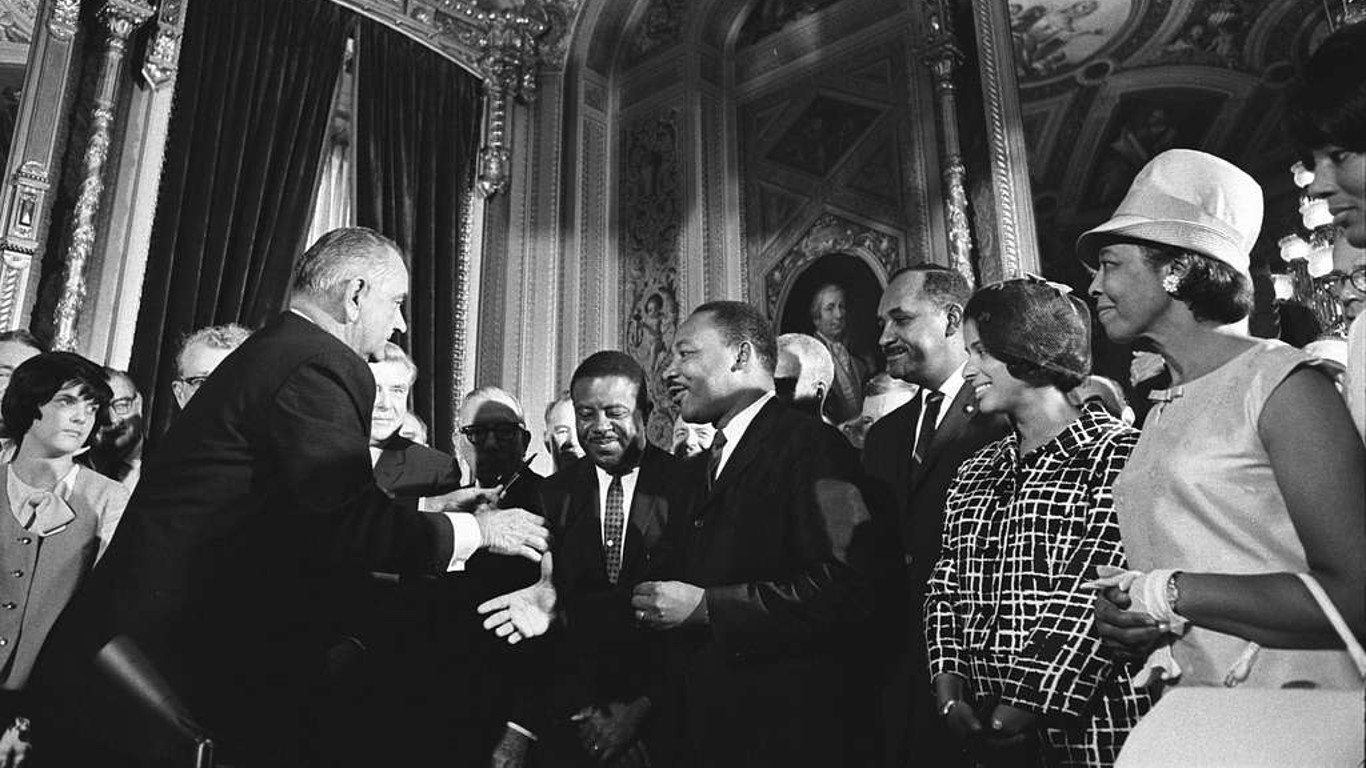
Dec. 3, 1963: Meeting with President Lyndon B. Johnson at the White House
King meets with President Johnson less than two weeks after the assassination of President Kennedy in Dallas. Johnson proved to be a great champion of civil rights, and signed the landmark Civil Rights Act of 1968 following King’s own assassination.
[in-text-ad-2]
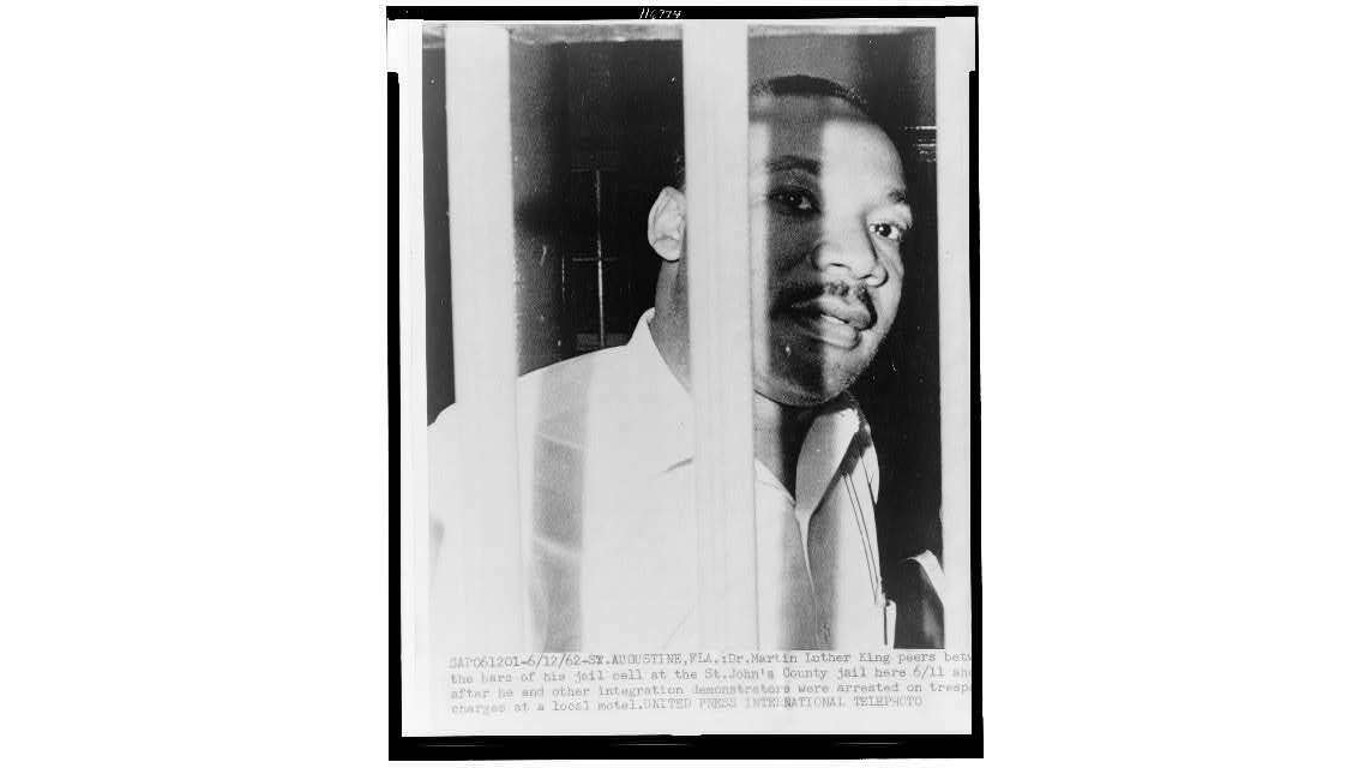
June 11, 1964: In a cell at the St. Johns County jail
King behind bars in St. Augustine, Florida, after having been arrested for trespassing at the whites-only Monson Motor Lodge. As with his Birmingham arrest, King wrote a letter from the St. Augustine jail – this one to his friend Israel Dresner, a New Jersey rabbi, asking him to bring fellow rabbis to St. Augustine to join the movement. As a result, a week after this photo was taken, some 17 rabbis were arrested at the motor lodge.
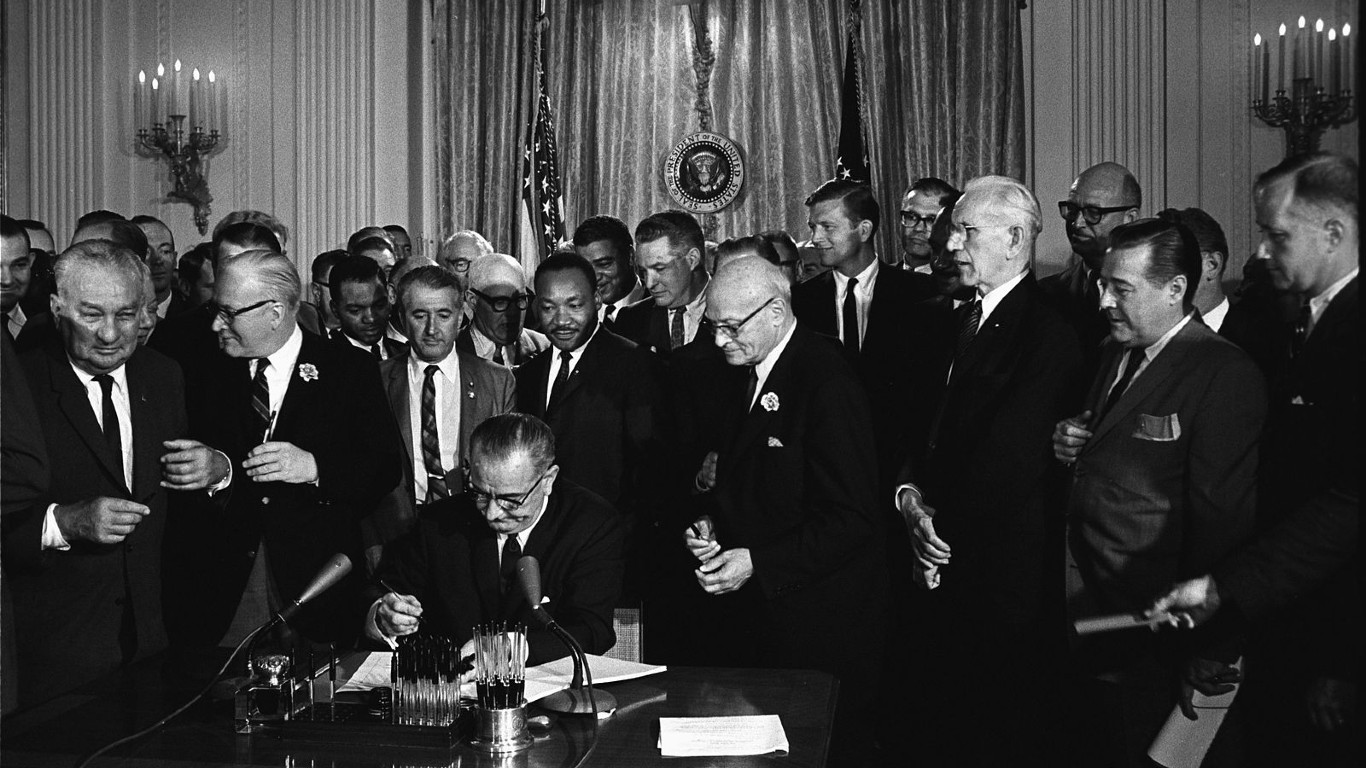
July 2, 1964: Behind Lyndon Johnson who is signing the Civil Rights Act
King is among the many looking on as President Johnson signs the Civil Rights Act of 1968.
[in-text-ad]

Aug. 12, 1964: In New York City
In a moment away from the civil rights struggle, King and two of his children, Yolanda and Martin Luther III, enjoy a “Magic Skyway” ride at the New York World’s Fair.
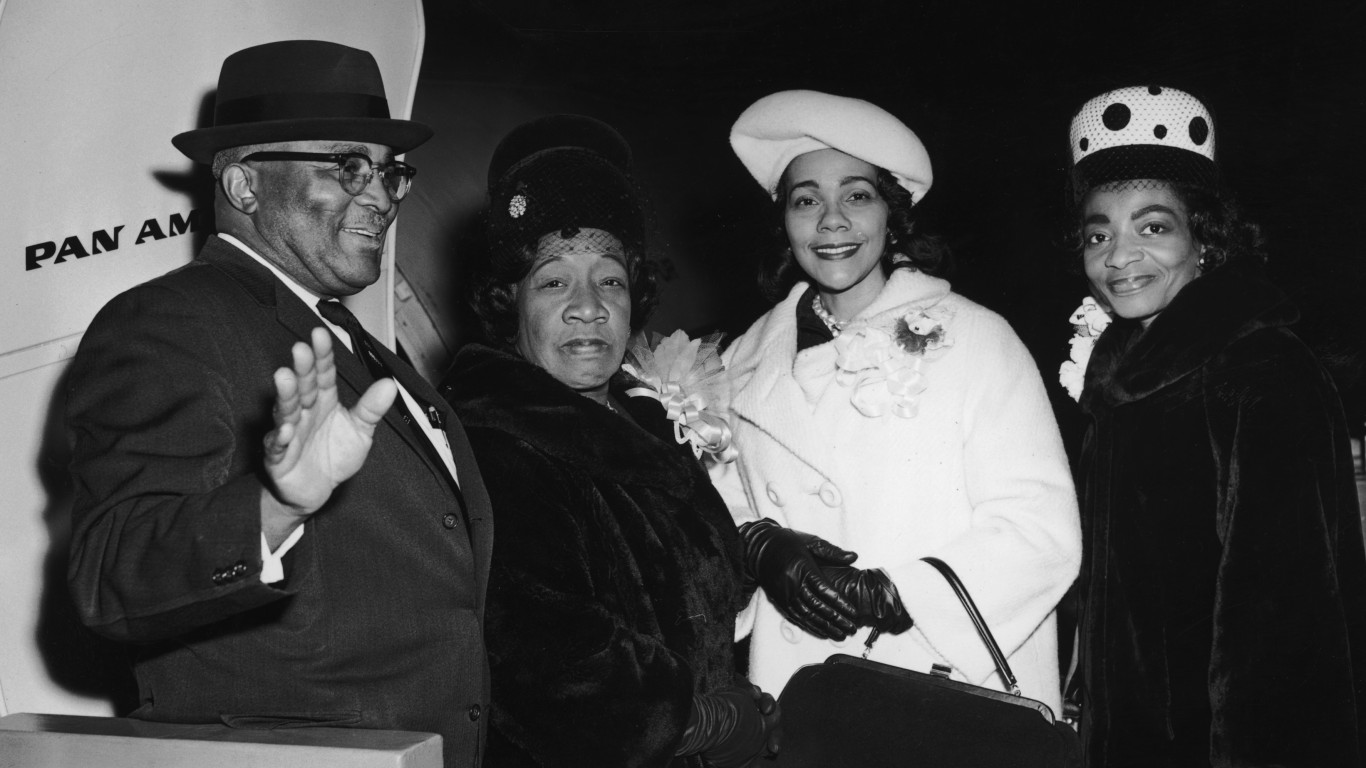
Dec. 10, 1964: Relatives leaving for the Nobel Peace Prize ceremony
Martin Luther King Sr., his wife, Alberta Williams King, Martin Luther King Jr.’s wife Coretta Scott King, and MLK’s sister Christine King Farris boarding a plane to attend the Nobel Peace Prize ceremony, honoring King Jr., in Oslo.
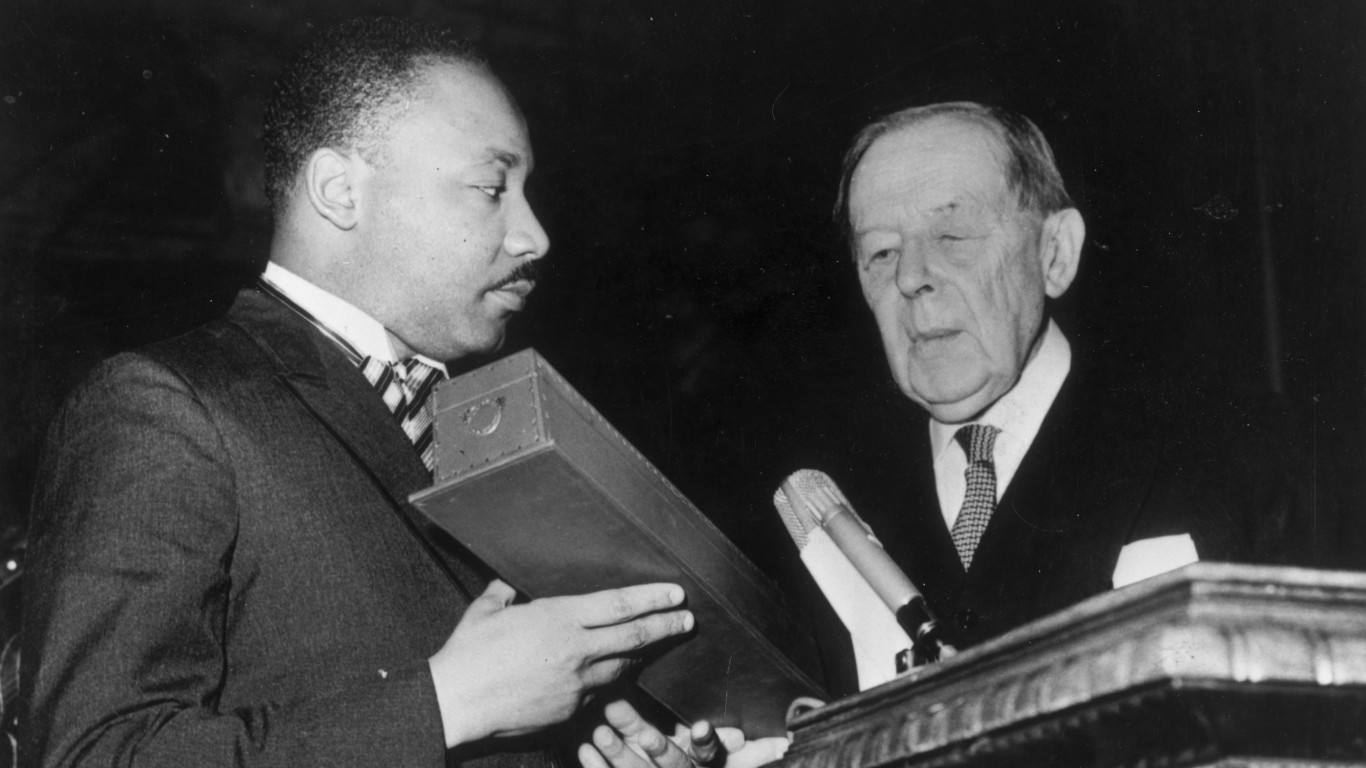
Dec. 10, 1964: Accepting the Nobel Prize for Peace
King accepts the Nobel Prize for Peace from Gunnar Jahn, president of the Nobel Prize Committee, in Oslo.
[in-text-ad-2]

March, 1965: During the Selma to Montgomery March
King leading one of three Selma to Montgomery protest marches for Black voting rights. Other civil rights leaders in the front line include Ralph Abernathy and Ralph Bunche.

March 27, 1965: At a church in Selma, Alabama
King preaching at a church in Selma. By this time, he had become legendary across the nation for his oratorical skills.
[in-text-ad]
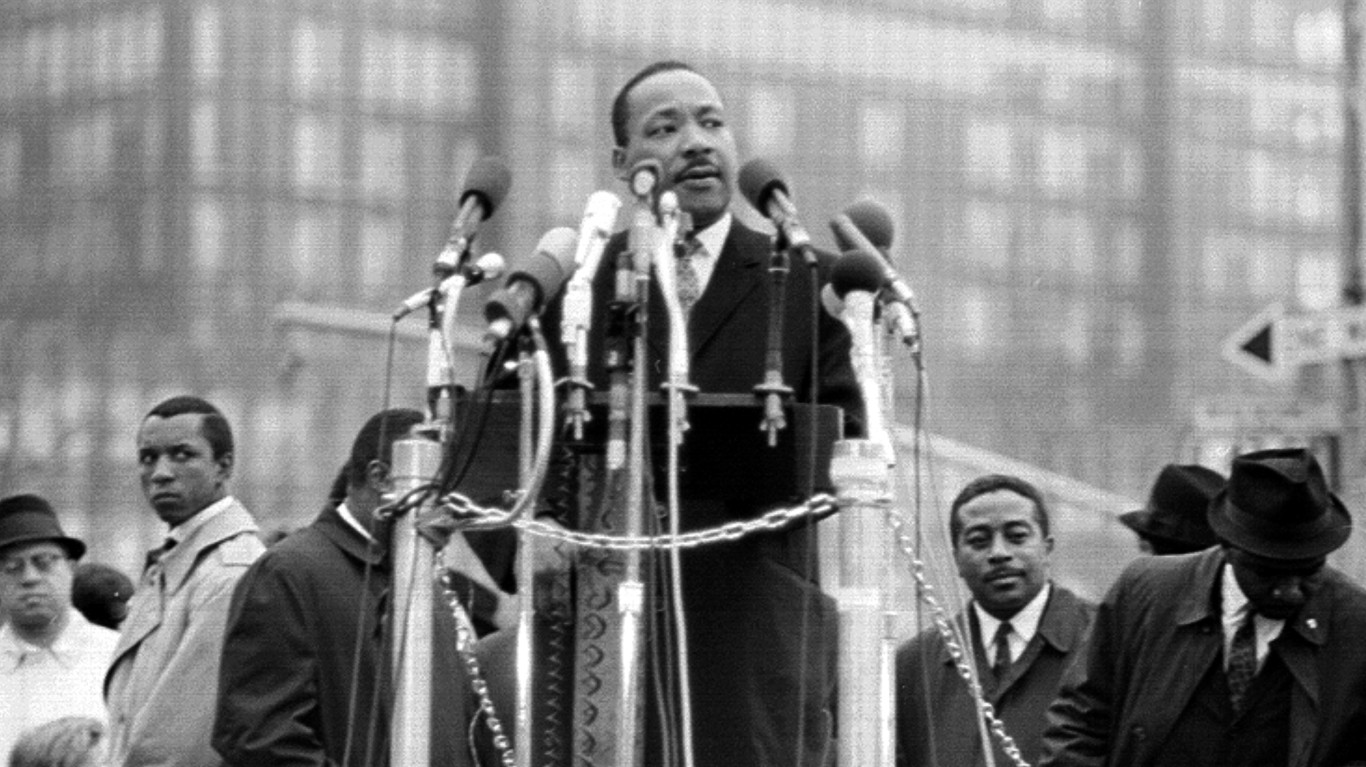
March 1965: In Washington, D.C.
Two years after his famed “I Have a Dream” speech in the nation’s capital, King addresses another demonstration in the city.
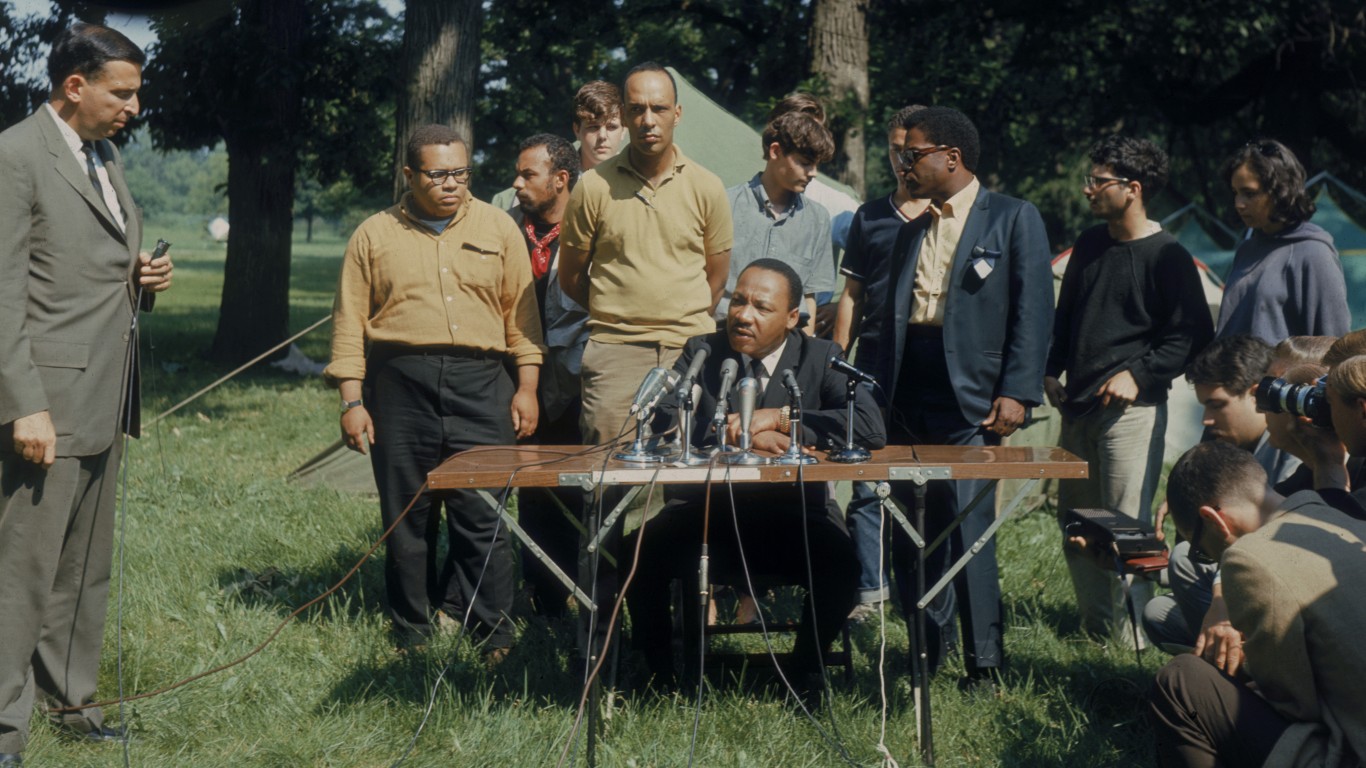
June 23, 1967: At the Cenacle “tent-in” at Warrenville, Illinois
King giving a press conference at the Cenacle “tent-in” in the Chicago suburb of Warrenville. King concerned himself with the struggle against racism in Illinois as well as in the South.

Aug. 6, 1965: At the signing of the Voting Rights Act of 1965
King with President Johnson at the ceremony marking the signing of the Voting Rights Act, prohibiting racial discrimination in voting practices. Supreme Court decisions weakened the act in 2013 and again in 2021.
[in-text-ad-2]
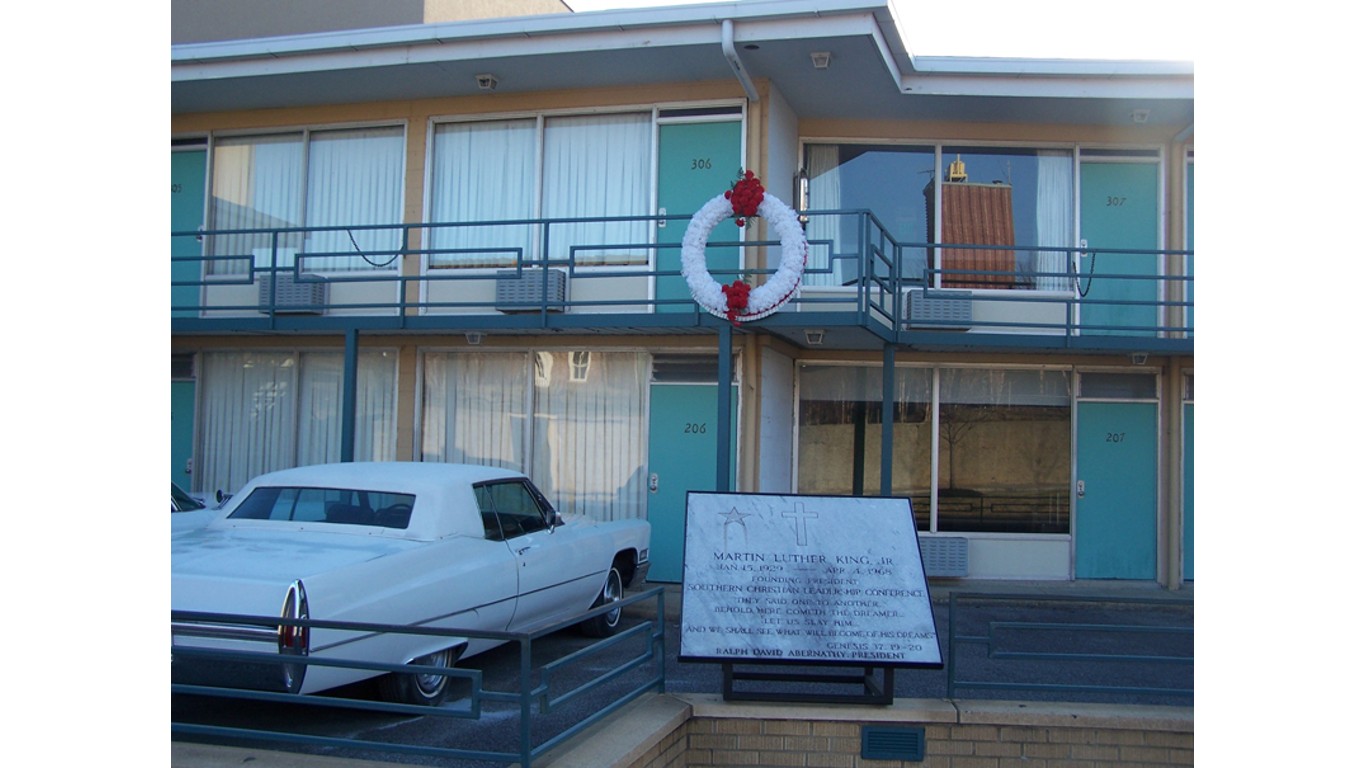
1968: The balcony of the Lorraine Motel in Memphis, Tennessee
The balcony at the Lorraine Motel in Memphis where King was standing when he was killed by a bullet fired by assassin James Earl Ray. The motel is now part of the National Civil Rights Museum.
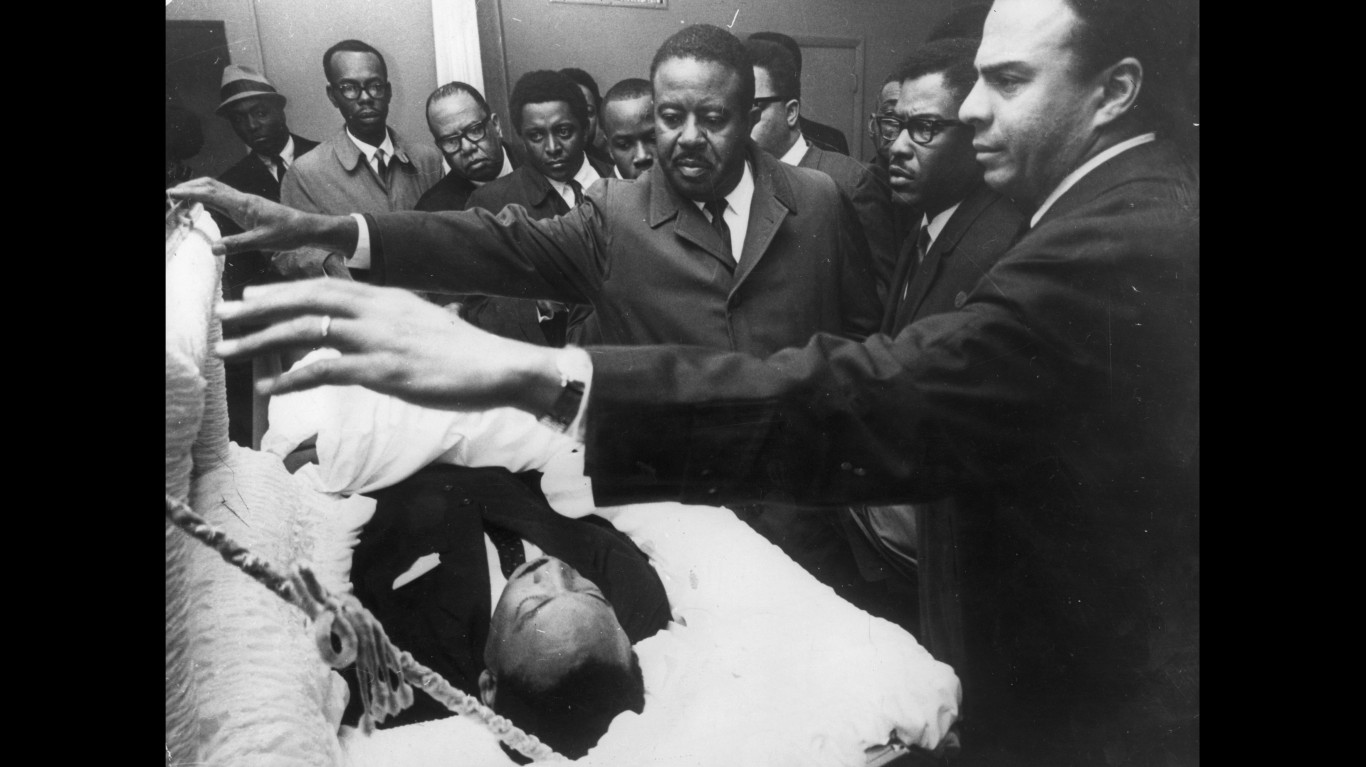
April 5, 1968: Lying in state in Memphis, Tennessee
King’s colleagues in the civil rights movement (from right), Andrew Young, Bernard Lee, and Ralph Abernathy pay tribute to the fallen leader as he lies in state in Memphis.
Take Charge of Your Retirement In Just A Few Minutes (Sponsor)
Retirement planning doesn’t have to feel overwhelming. The key is finding expert guidance—and SmartAsset’s simple quiz makes it easier than ever for you to connect with a vetted financial advisor.
Here’s how it works:
- Answer a Few Simple Questions. Tell us a bit about your goals and preferences—it only takes a few minutes!
- Get Matched with Vetted Advisors Our smart tool matches you with up to three pre-screened, vetted advisors who serve your area and are held to a fiduciary standard to act in your best interests. Click here to begin
- Choose Your Fit Review their profiles, schedule an introductory call (or meet in person), and select the advisor who feel is right for you.
Why wait? Start building the retirement you’ve always dreamed of. Click here to get started today!
Thank you for reading! Have some feedback for us?
Contact the 24/7 Wall St. editorial team.
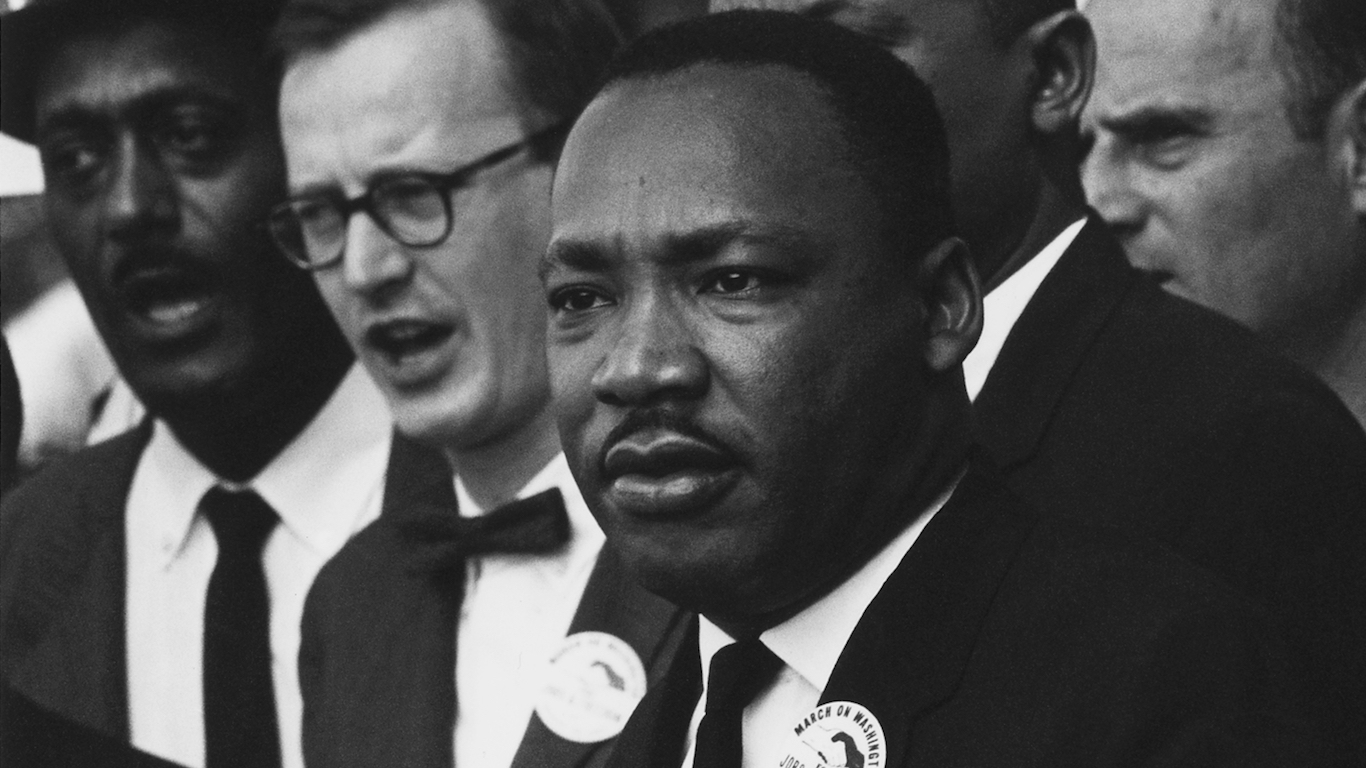 24/7 Wall St.
24/7 Wall St.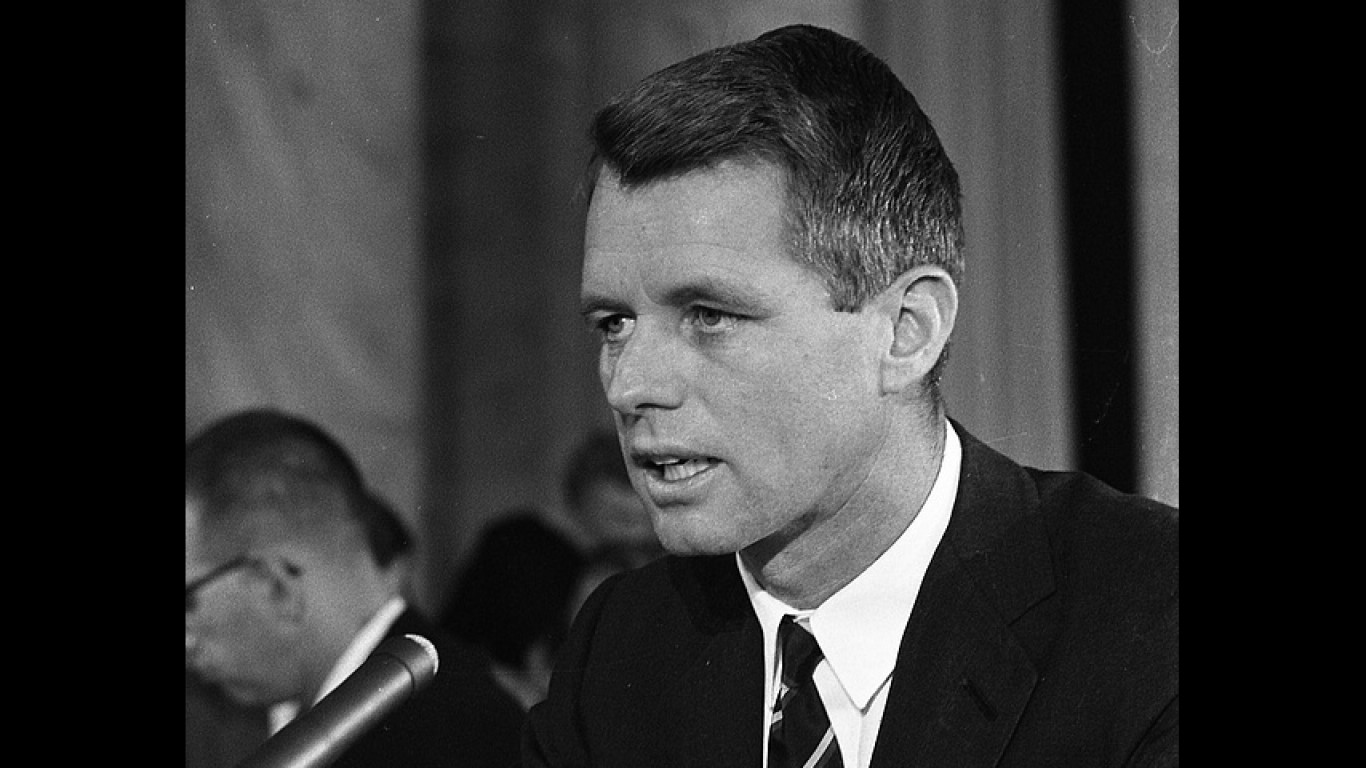 24/7 Wall St.
24/7 Wall St.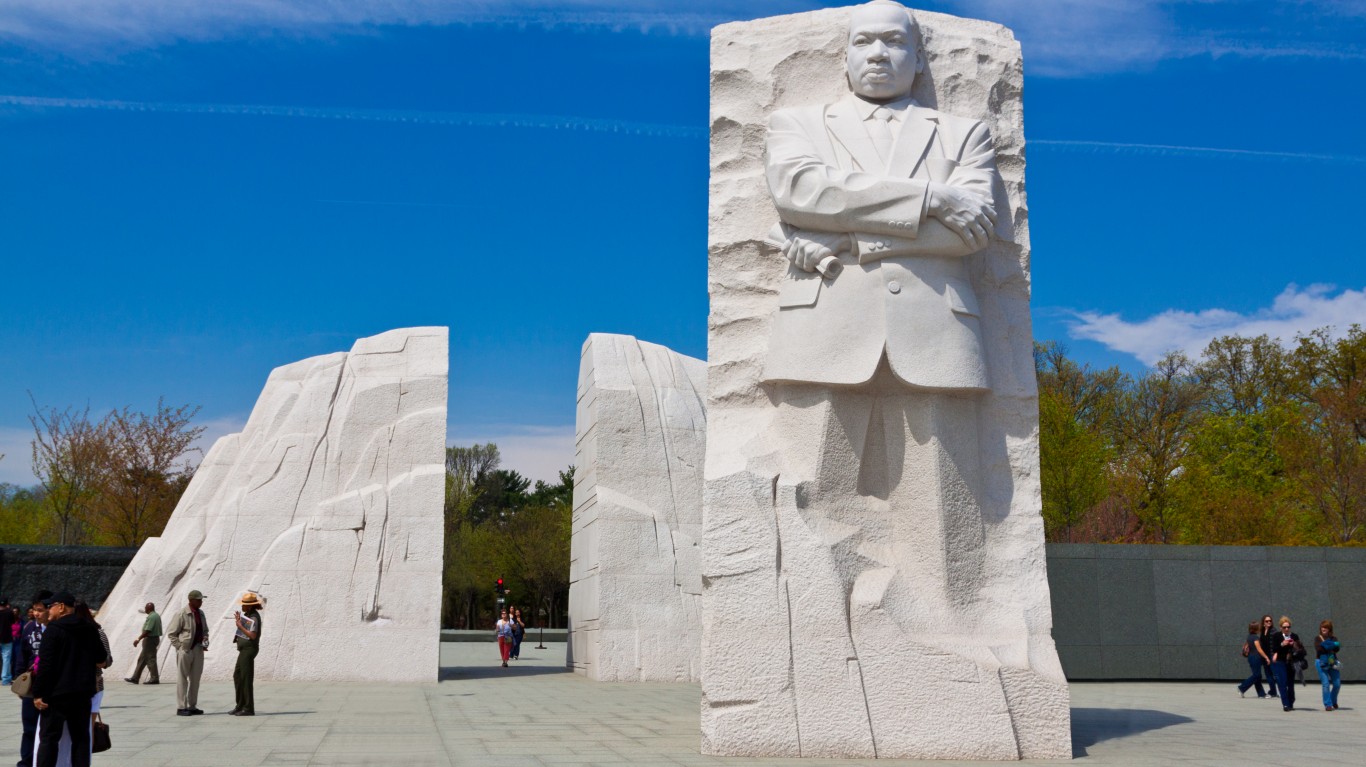 24/7 Wall St.
24/7 Wall St.